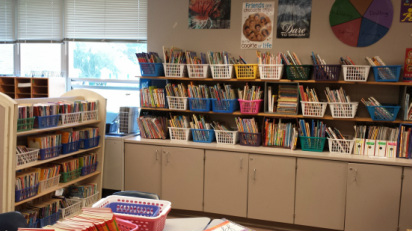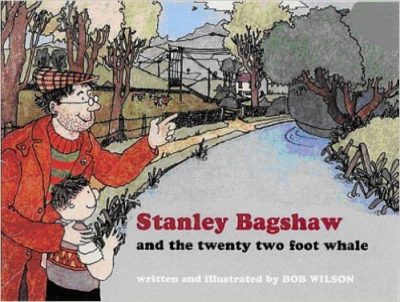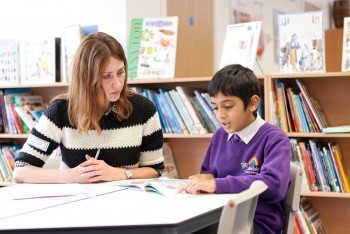Reading is an integral and vital part of the education of all children – without sufficient progress and proficiency a child’s ability to both access and function successfully within the curriculum will be severely diminished.
It is not my intention in this article to look at the mechanics of reading but rather the tracking and assessment mechanisms that we can use in our class to let us know, as teachers exactly how our pupils are progressing.
Reading Schemes
There are 3 basic scenario’s that exist in schools in respect of reading schemes
- There exists a whole school reading scheme which is progressive across both key stages
- KS1 has its own reading scheme that it follows and then there are different arrangements for KS2
- KS1 has its own reading scheme but there exists no progressive scheme in KS2 and teachers are left to build their own resource base for reading.
The problem is, of course, that stocking and maintaining reading schemes is expensive and needs a constant input of school funds year on year in order to be fully operational and we can find at times that existing schemes suffer from underfunding and as such be incomplete – we are then, as teachers, having to get creative to fill the gaps!
In practice KS1 seems to be more organised than KS2…now this is going to have some colleagues shouting that they are well organised across the whole school – and that’s great if you are. However if a school reading scheme is to fragment then it is usually across KS2 that it happens!
Key stage 1 reading
Just a brief mention therefore on reading at this Key stage. More often than not KS1 have a complete scheme (or part of a whole school scheme) that is followed in all classes. The use of book bags and home/ school reading diaries is the norm and reading progress is fully tracked and documented.
Key stage 2 Reading
However it is at this key stage that things can start to fragment depending on the approach to reading by the school.
The questions that need to be answered by any tracking system are as follows…
- At any time can a member of staff see which reading book / level each child is currently on?
- Is there a system in place that assesses whether the child has achieved sufficiently on a particular book / level to move forward?
- How long has a child taken in reading a book?

Now if the school has a “whole school” reading scheme then this should be taken care of as a matter of course…provided that the reading scheme is FULLY stocked. Because it is when reading schemes are incomplete that problems occur and breakdown happens.
Lets look at one particular example – Accelerated reading
Accelerated reading is a complete reading system which tracks children’s progress and achievement by the use of computer questions and quizzes about the book that has been read. This allows a complete record of how each child is progressing and their understanding of the books that have been read. It’s well thought out and can be very successful.
BUT – Accelerated reading necessitates that the school has the stock of books that accompany the scheme. This is an extensive list and as such a major purchase for the school…in other words it costs a lot to initially stock and also ongoing costs to maintain and renew books.
And the system starts to break down when children read books that are not in the reading list for accelerated reading…then what?
The other problem with the accelerated reading system is the actual assessment / checking of the pupils attainment. For a class of 30 pupils how many computers do you need up and running to keep pace with the demand for finished book quizzes?
In my class we had 1 computer and then extended to 2 computers…which barely kept up with the demand – to the point where we had to run a “waiting list” and the children take holding books until the tests were completed!
As the system is computer based it requires children to complete the tests online…should you, as a teacher assess the child on their book then this omits the record keeping element on the computer and so negates the results!

So what can be done simply and easily?
- Get your class library / reading area organised – if you have a reading scheme in operation then this should be kept separately. Otherwise all other (reading) books should be graded according to reading level and labelled on the shelves. If you label the shelves as levels then you can simply write on the spine or the cover of a book the level.
- Have a couple of competent library monitors that man the library at reading times. These can help other children to find new books and will store books back correctly.
- Set up a simple reading chart that you can complete as things move forward.
What do these simple addition allow us to do?
If you have a full scheme in your school then it should run itself complete with a recording and assessment system. However if this is not the case or your scheme is incomplete (as our accelerated reading scheme was!) and is in danger of malfunctioning then these steps will help.
- Make a simple grid with all the children’s names down the left hand side – write their current book title and date in the 1st square next to their name…that’s your starting point.
- No child can change a book without being tested (and passed) and when changed they must return to you or the class T.A to have this book recorded and dated on the sheet.
- If your school scheme is incomplete then you can combine tests from the “system” and also teacher / T.A tests together and having passed by either route, a child can exchange their book.
- If your school has no set scheme to follow then having graded your class reading books then this system will test and record as you go.
- By simply looking at the record sheet you will be able to see immediately – what level each child is currently on – what book each child is currently reading and just how long they have been reading that book or on that level.
How can a teacher or T.A assess a child’s achievement?
Quite simply really – by having a system where no child can change a book or progress without being assessed ( and we will assume here that you or your T.A is either supplementing or even being the sole testing resource) then children will know that having finished a book they must come to see you.
Testing is really up to you…but I used to ask about these sorts of things
- General story – or hone in on a particular chapter or event
- Characters in the story
- Brief passage read
- selected word reading and possibly meanings
- Etc…..you get the idea
If passed then the child was sent to change a book – either same level or move up to the next. Or in the event of failing then they were sent away to re read or check some aspects before retesting.

A brief look at reading levels
Most schemes will have progressive levels for all the books in a scheme. These will usually be divided into colours for KS1 and numbers in KS2 (although this is not always the case). Within each level there will be subdivisions which again may vary according to scope.
As a very general guide – when children reach Level 5 ( certainly in Accelerated reading) they are ready for “Free reading” where they can choose their own books. Many schemes will continue beyond this point but as a guide this is where they can have a freer choice.
If you have a full scheme in your school then you will be able to move children through the scheme easily. But if your scheme is fragmented or non existent then you will find that you are introducing reading books into what you have in your class. It is possible to check the reading levels of books by looking them up online and if you would prefer to do this then it really is the correct way to go. However with experience it is possible to look at the content of a book and to give it a grading that will sit within whatever reading approach you have. Faced with a few piles of donated or ex “book fayre” contributions then this is a quicker way to go about things.
As a final thought – this was a simple system that I have used in a few classes where the reading schemes needed supplementing. It is easy to use and once the children get used to things it functions well. It provides records of progress and achievement and is easily and simply accessible – however I will make a brief mention here of situations I have witnessed where no records are kept of children’s levels or progress and children are allowed to simply change books whenever they wish. This is, in my opinion not an educational approach to reading and results in children simply drifting through books without either the challenge of the book nor unfortunately the enjoyment.
As such an important foundation for the rest of the curriculum; reading should really be at the forefront of our concerns and a sharp focus for our teaching.


